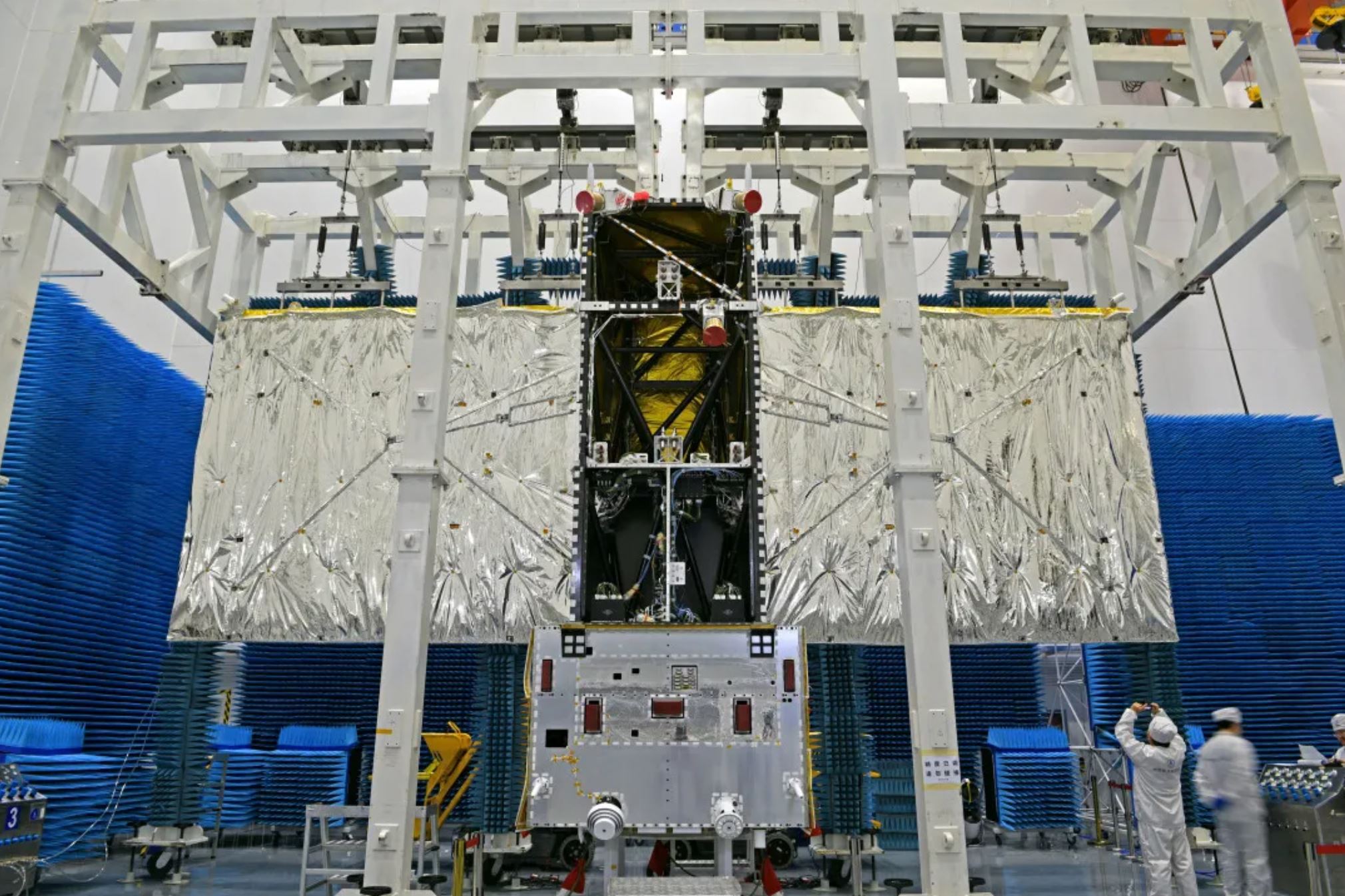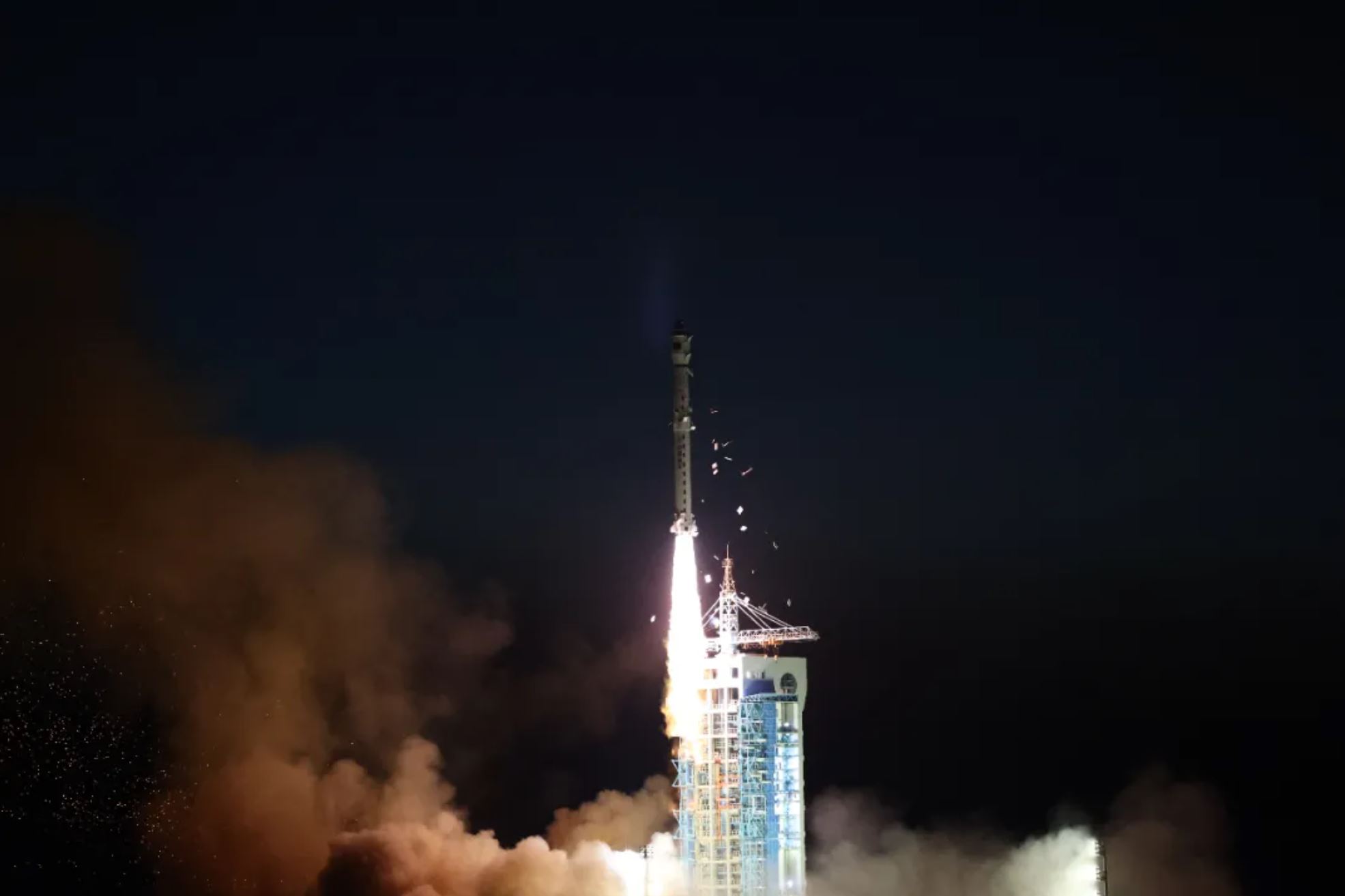China's second launch of the year puts radar satellite in orbit
On Tuesday (Jan. 25) China launched the first of a pair of radar satellites that will provide important geological data following earthquakes and landslides.
A Long March 4C lifted off from Jiuquan Satellite Launch Center in the Gobi Desert at 6:44 p.m. EST Jan. 25 (2344 GMT, or 07:44 a.m. local time on Jan. 26).
Insulation tiles, designed to keep the rocket’s hypergolic fuel in the optimal temperature range in the cold desert winter, fell away from the launch vehicle as it climbed into the night sky.
Video: China launches land observation satellite - See rocket shed tiles in slo-mo!
Related: China sends classified satellite into space during first launch of 2022
On board was the L-SAR 01A satellite, equipped with L-band synthetic aperture radar (SAR), which will be used to monitor the geological environment, landslides and earthquakes. It is in a near-polar orbit of 98 degrees with an altitude of about 373 miles (600 kilometers).
Radar observations from space have the advantage of being able to see through clouds. L-band is a range of radar wavelengths that are useful for penetrating vegetation, such as forests, and making observations of soil and rocks.
L-SAR 01 is the first of a group of two satellites. L-SAR 01B will launch at the end of February, according to the China National Space Administration.
Breaking space news, the latest updates on rocket launches, skywatching events and more!
The pair of satellites will fly in formation and provide geological insights after seismic events such as earthquakes, volcanic activity and landslides and aid relief efforts. The satellites will also conduct large-scale topographic surveys.
The satellite’s developer, the state-owned Shanghai Academy of Spaceflight Technology (SAST), stated that the L-SAR 01 satellites will contribute to the realization of global goals such as sustainable development.
China has increased its launch rate in recent years and launched more than any other country last year with 55 launches. That means there is more pressure on the country's launch centers.
Zhai Wenjiang, head of the ground station of China's Jiuquan Satellite Launch Center in the Gobi Desert, told Chinese media that the launch center has upgraded its information technologies in the past year.
"We handled space station missions and satellite launch missions simultaneously last year. Faced with a multitude of launch missions and higher requirements, we spared no efforts to tackle key problems, carried out research and development for information technologies," Zhai told CCTV+.
The launch was China’s second orbital mission of 2022, following the Jan. 17 launch of the classified Shiyan 13 test satellite. It was the seventh launch of the year globally, following five successful U.S. launches.
Follow us on Twitter @Spacedotcom and on Facebook.

Andrew is a freelance space journalist with a focus on reporting on China's rapidly growing space sector. He began writing for Space.com in 2019 and writes for SpaceNews, IEEE Spectrum, National Geographic, Sky & Telescope, New Scientist and others. Andrew first caught the space bug when, as a youngster, he saw Voyager images of other worlds in our solar system for the first time. Away from space, Andrew enjoys trail running in the forests of Finland. You can follow him on Twitter @AJ_FI.



